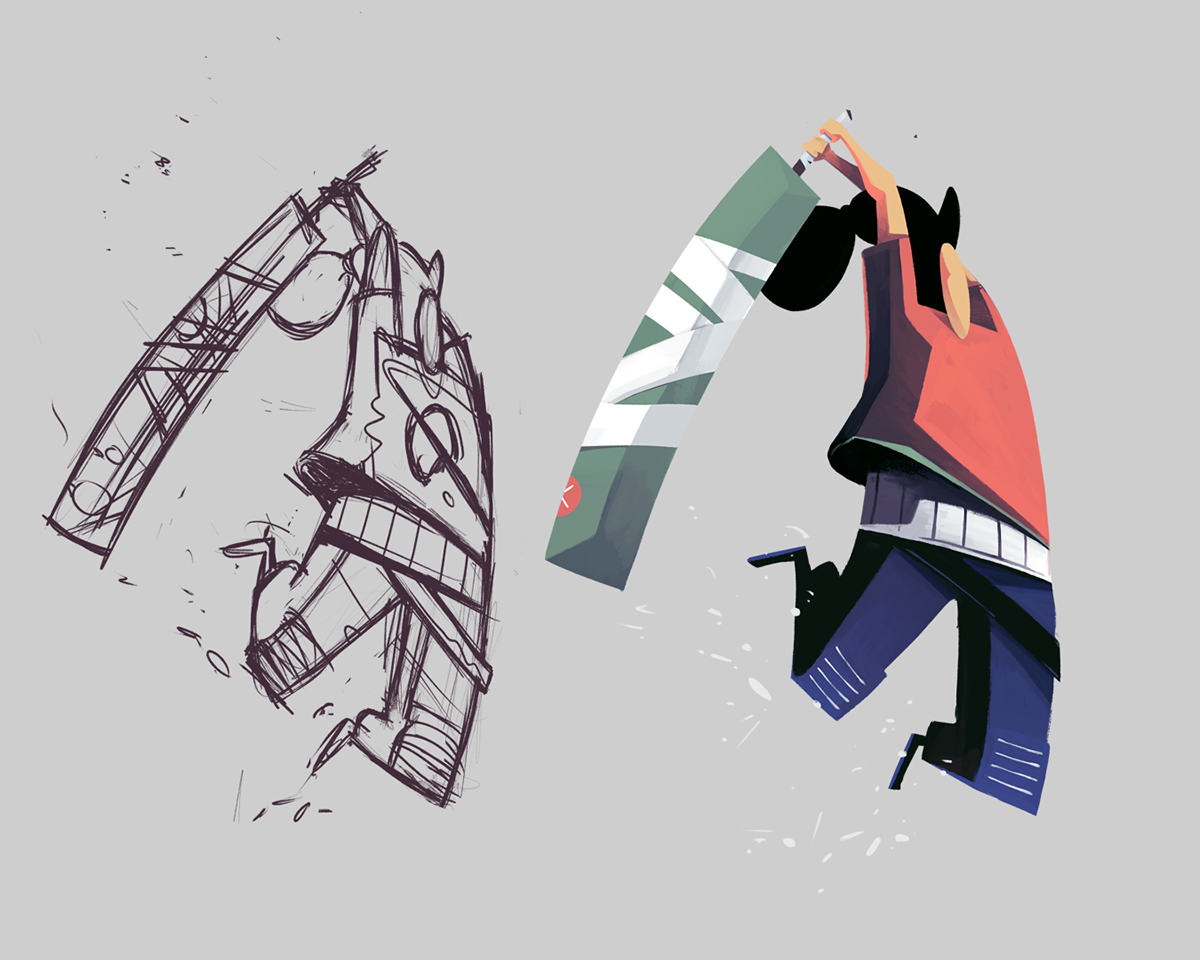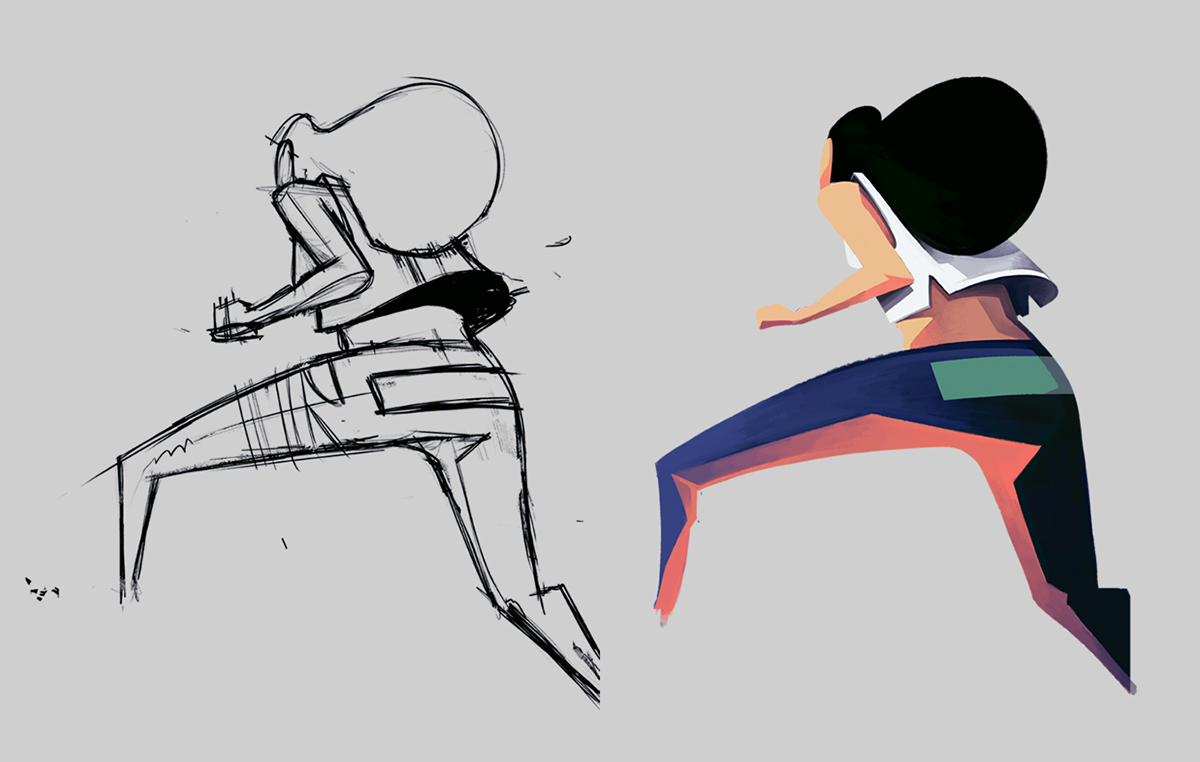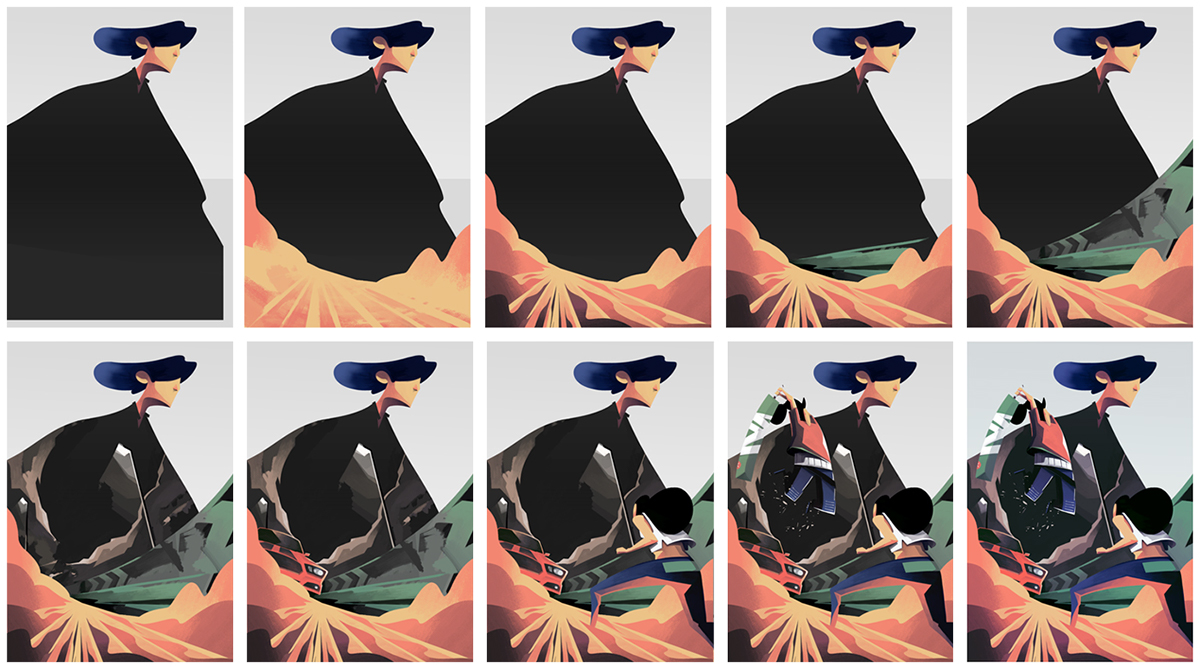March 28, 2018
PlayStation VR price drop makes the peripheral even harder to pass up
Sony’s PlayStation VR headset has received another price drop. For $300, you can get everything you need to play in virtual reality, including a copy of the game Doom VFR, made specifically for VR.
The post PlayStation VR price drop makes the peripheral even harder to pass up appeared first on Digital Trends.
Source: Digital Trends VR
March 27, 2018
Nvidia hits the brakes on public autonomous tests after fatal Uber crash
Nvidia put a halt on testing autonomous vehicle technology on public roads after Uber’s deadly incident in Arizona. For now, the company will likely rely on simulations and private lots as it investigates the Uber crash.
The post Nvidia hits the brakes on public autonomous tests after fatal Uber crash appeared first on Digital Trends.
Source: Digital Trends VR
March 27, 2018
SXSWfm 2018 Showcasing Artist Interview: Wallows

During the week of SXSW 2018, SXSWfm was given the opportunity to interview Cole, Dylan, and Braeden from the Californian band Wallows. We chatted about first meetings, past band names, our favorite Beatles songs, new music, and their time here in Austin. Read an excerpt of the interview below, and listen to it in full on our mixcloud.
Listen to SXSWfm Interview with Wallows
Wallows Interview Highlights
How many times have you played at SXSW? Is this your first year?
Dylan: This is our first year – first time.
Oh welcome!
D: Yeah thanks!
Why was coming to SXSW so important to you?
D: I mean honestly, it was so important just because it’s a right of passage for upcoming artists to play here, do showcases, and introduce themselves to new audiences and fans alike who want to come; and there’s just so many awesome people who play here every year. And for us, we were just stoked to be a part of it. We’ve always looked at South By and said “oh one day we will play at South By” and now we’re here which feels right and really cool. I’m hoping to come back next year … just one day we’ve been here and we’re already having a really good time.
Cole: We’re only doing four showcases, but I’ve seen bands that are doing 16 or something ridiculous, and it’s like, I want to come back and do even more. It’s a really good vibe around this place.
D: We really wish we were playing like that. I want to do the full experience. But we are starting light. Only five songs out right now, it makes sense.
Okay, so let’s start at the beginning. I heard you formed at a very young age. A long time ago. How did you guys meet, how did this happen? How did Wallows happen?
Braeden: We met when we were all very young. Dylan and I met when we were very, very young. We were like nine. We kind of bonded over music, classic rock music. I started playing guitar – my dad’s a guitar teacher so he taught me – so I learned Green Day songs, the classic bit. And then we started listening to The Beatles and stuff … Dylan actually invited me to this music program in L.A. called “Join The Band” where they bring random kids together to hang out and jam, and then play a show on the strip, on the Sunset Strip. And then Cole was actually the drummer that was in the room when we showed up. And then we thought he was awesome and cool so we decided to keep it rolling … that’s crazy, that’s going so far back! But then we just kind of stuck with it and we went through different variations of band names and Wallows formed last year as that name and these songs. Yeah, we’ve been together for a long time.
So when you guys were that age, did you think “Oh, we are going to be so big.” Did you know you would be at the success level you guys are at now?
D: I’d say we were the most confident when we were 13. I think our confidence level has gone down as we’ve gotten older. Not in a bad way – I think our brains got more realistic. I mean, no we never thought we were going to be big. I mean I remember when we were 14 we were like “if we toured forever doing 200 people clubs, that would be awesome!” So it’s kind of the same mindset honestly as when we were kids. It’s just however many people latch on to it, we are fine with. I’m not afraid to be super huge; I’m also not afraid to be super underground. It’s just whatever kind of audience we get.
As long as you’re playing.
D: As long as we’re playing; as long as people like it. As long as we have fun doing it, and we enjoy what we’re doing.
How would you guys describe your sound to a new listener because you have been compared to some crazy big bands.
C: I mean we have been compared to The Strokes, Arctic Monkeys, and that kind of – or the old Arctic Monkeys. But I don’t really want to say what I would describe our sound because I feel like it’s subject to change. I don’t think we want to be tied down to any one particular thing. But I will say our main influences are Arcade Fire, Dylan is a total Frank Ocean dork, sorry I just really attacked you.
D: I’m on the reddit page all the time. I’m a part of the cult.
So you’ve released five songs, like you said, since April. Is it important for y’all to just keep pumping out music? You didn’t want to just do two and have that be an EP? Was it important, as a new band, to keep sending those singles out to have more content?
D: Yeah, I think content is extremely important. I think some of the most thriving artists right now are putting out music left and right, and consistently good music. So if you can find a way to consistently release great music, that’s the best thing possible. But also just doing it at a realistic rate and at a rate that’s not overbearing either, like four singles we put out, and then the new one will be on the EP. So we will have ten songs out because the EP is six songs, and then we are going to record our album this spring and have an album out by the beginning of next year. By the time we come back to South By, for example, we will have, what, 20 songs out, or something near that, which will be exciting to actually have more material to play. It definitely is a goal – like the tour we just did was great and really fun, and South By is great, but it will be fun to go back on the road and do South By and all of this again when audiences and people can come to the show and know all of the songs we play. I’m just excited to move on already – do our work and move on and do this all again when people care even more.
So the new EP – it’s going to be new songs? You know people release singles and then that’s the EP. It’s going to be all new songs?
D: The EP is all new songs besides “Pictures of Girls.” We released that as its own single, but that’s from the EP.
So what’s next? You’ve got the EP, you said the album, are you still touring?
D: We are recording an album, and then we are going to do some one-off shows for the rest of the year because we won’t have enough time to do another tour. But we will be doing some major city stuff, and festivals. And then next year, I think once the album is out, we will probably do a much bigger version of what we just did. I’m not saying venues, but just longer, more cities, worldwide, kind of stuff. We can foresee the next year and a half, and then who knows what will happen after that.
Tune in to hear the full interview with Wallows below. Keep checking our Mixcloud page in the coming weeks as more interviews with 2018 SXSW Showcasing Artists are released. You can listen to SXSWfm 24/7 via our online player.
Listen to SXSWfm Interview with Wallows
2018 Showcasing Artist, Wallows – Photo by Shelby Magness
The post SXSWfm 2018 Showcasing Artist Interview: Wallows appeared first on SXSW.
Source: SxSW Music
March 27, 2018
CX Field Guide: A Journey into the Unthinking Mind

Katya Andresen, Senior Vice President of Card Customer Experience at Capital One, was a 2018 SXSW Speaker at the Capital One House at Antone’s. The article below, provided by Andresen, reflects the key themes of her March 10 talk, “A CX Field Guide for the Intrepid.”
Years ago, a friend of mine told me a story about running focus groups for an electronics company that was testing boombox designs. The goal of the focus group was to understand how people made decisions about what devices they preferred. The participants were asked what they thought of the colors available — one black, one yellow. Everyone professed enthusiasm for the yellow boombox. Then, when it was time to leave, the participants were invited to take home one of the products for free. Everyone chose the black one.
“Never ask people to predict what they will do — or why they do what they do,” the researcher advised me. “We’re just not that rational.”
Technology has since changed dramatically but human nature has not. The good news is that we’re not only in an era of rapidly advancing technology — we’re also in a golden age of neuroscience. We understand how people think — in all its irrational glory — better than ever. That means we can design great products and experiences based on a deeper understanding of the human psyche. That’s an incredible opportunity, because if we understand people more deeply, we can matter more deeply in their lives.
Researchers from the fields of psychology, neuroscience and behavioral economics have concluded we are literally and figuratively of two minds: the rational, prefrontal cortex mind (system 2) and then the more instinctive and impulsive mind of our limbic system (system 1). The rational, deliberative self is the one that vows to get up at 5 a.m. The more impulsive, automatic, emotional one hits snooze the next morning. The rational, “thinking” mind sometimes gets caught in analysis paralysis; the more “unthinking” mind give you a gut instinct on how to take action.
If we want to build great experiences for our customers, we have to take both systems into account. But we tend to over-index to assuming that our customers (and colleagues) are rational. So much of our work — analyzing the numbers, summarizing the focus group results, coding the software, testing the product, projecting our P&L — strips the humanity of our customer from our minds. We begin to believe the rational answer is the full answer. So we have to encourage ourselves to depart from the realm of the rational. If we do not, we risk failing as leaders, product managers, corporate strategists, digital innovators, and just about everything else. Expanding our thinking to include the unthinking mind is the key to leadership and innovation. When we incorporate and create for this state of mind, we’re better equipped to build great companies and change lives for the better.
So how do we bring the unthinking mind to our work? Here are three takeaways:
A Field Trip into Psychology
In building an experience or a brand, creating deeply emotional connections with our customers is critical. When you ask people what they remember about an experience, they will form their opinion based on something psychologists call the peak-end rule. They will remember the most emotionally intense part of the experience and the very end.
So as you design an experience for your customers, ask yourself how you might create both an emotional peak and memorable end. When you take this framework into account, you can begin to build a beloved brand.
A Field Trip into Neuroscience
If peak moments help customers fall in love with your product, service or experience, then how do you keep them coming back for more? The question moves us into the automatic, habitual brain and involves cultivating a sense of routine, or a set of habits, for your customers. Habits – both good and bad – are powerful, as many of us know. They have a tremendous influence on what we do. In fact, about 40% to 45% of our actions each day may feel like they are based on a decision we have made, but they are actually habits in action. If we think about our experiences through the lens of habit formation, we have the opportunity to understand how to be more digitally engaging. When we approach building habits this way for our customers, we’re able to create more meaningful, lasting relationships.
A Field Trip into Behavioral Economics
We’re told that people arrive at most decisions through a process of weighing costs against benefits. In reality, we’re at times irrational, impulsive, ruled by emotion, and limited in attention. The heart often overrules the head, so customers need incentives to help them make the best long-term choices in life — especially when it comes to their financial lives. A great example of this principle in action at Capital One is CreditWise® from Capital One®, our free credit monitoring and protection tool which helps people build, improve and protect their credit. The CreditWise app looks to nudge users by removing barriers to embracing positive credit behaviors – barriers like decision fatigue. The app identifies the most important actions a user could take to make the biggest improvement to their credit score to strengthen their financial position in life.
By embracing these three tips, you’ll be better equipped to tap into your customer’s unthinking minds and — more importantly — understand them as people. At the end of the day, that’s the number one job of anyone building customer experiences. Because if we seek to understand our customers deeply, we can matter more deeply in their lives and create a lasting relationship, however technology evolves.
Katya Andresen is a Senior Vice President, Card Customer Experience, at Capital One. To follow Katya, connect with her on LinkedIn and Twitter.
Content provided by Katya Andresen
Photo courtesy of Capital One
The post CX Field Guide: A Journey into the Unthinking Mind appeared first on SXSW.
Source: SxSW Film
March 27, 2018
Barry Jenkins Film Keynote at SXSW 2018 [Video]
“My first film Medicine For Melancholy premiered at this festival, world premiered at this festival. I’d like to say that SXSW is kind of like the birth of Barry Jenkins filmmaker in a sort of way. I remember being here in 2008 and sitting in a room just like this, listening to people talk on a stage behind a podium, just like this, and wondering what does it take to get from the back of that room to the front of this stage. That was ten years ago,” said SXSW Film Keynote Speaker, Barry Jenkins on Sunday, March 11 at the 2018 SXSW Conference.
Academy Award winner Barry Jenkins was born and raised in Miami, FL. A Florida State University graduate, Jenkins’ feature film debut, Medicine For Melancholy world premiered at the SXSW Film Festival in 2008, and was hailed as one of the best films of 2009 by The New York Times.
Jenkins along with playwright Tarell Alvin McCraney received an Academy Award for Best Adapted Screenplay for his second feature Moonlight, which won Best Picture at both the Oscars and the Golden Globes (Drama). Jenkins is the recipient of a DGA Best Director nomination and the winner of the WGA Award for Best Original Screenplay. Most recently, Jenkins directed an episode of the Netflix Original Series Dear White People.
Upcoming projects include an adaptation of James Baldwin’s novel If Beale Street Could Talk, and an adaptation of the Pulitzer Prize winning novel The Underground Railroad by Colson Whitehead for television. Jenkins, currently resides in Los Angeles, is a curator at the Telluride Film Festival and a United States Artists Smith Fellow.
Watch the video above for the full 2018 SXSW Conference Film Keynote with Barry Jenkins. Get inspired by a multitude of diverse visionaries at SXSW – browse more 2018 Keynotes, Featured Sessions, Red Carpets, and Q&A’s on our YouTube Channel.
Follow us on Facebook, Twitter, Instagram, and SXSW News for the latest SXSW coverage, recaps, upcoming 2019 announcements, and more.
Filmmaker Barry Jenkins at 2018 Keynote – Photo by Travis P Ball/Getty Images
The post Barry Jenkins Film Keynote at SXSW 2018 [Video] appeared first on SXSW.
Source: SxSW Film
March 27, 2018
The Roto Brush from Adobe After Effects Makes Rotoscoping Painless
Use rotoscoping to place text behind a person, help with color correction, or to just be super cool.Rotoscoping is a tedious task that involves …
Source: CW’s Flipboard Feed
March 27, 2018
Illustration Process: Battle by Thomas Rohlfs
Illustration Process: Battle by Thomas Rohlfs
Thomas Rohlfs is an illustrator from Amsterdam, Netherlands with a very unique style. He shared a illustration post on his Behance profile showing a bit of his process from sketches to the final piece. The most amazing thing for me is the sense of movement added by a quite aggressive perspective. In addition to that, the color scheme and textures are top notch.
Illustration Process




abduzeedo
Mar 27, 2018
Source: Abduzeedo Illustration
March 26, 2018
How to Maximize Your Story’s Impact by Celebrating Your Customer Objections
It’s one of the easiest things to fix, yet most marketers are either not aware or don’t know how to do it right.
When you think of the classic 3-act story structure, we typically talk about Setting, Conflict, and Resolution. This is a core DNA of any good story.
Setting covers your hero=customer’s life before she came across that nagging problem your product/service solves.
Conflict describes that problem or challenge that prevents your customer from getting what she wants.
And Resolution is where you – the mentor=guide comes along with your product/service and saves the day.
Naturally, this is the classic narrative sequence. Advanced business narratives test diverse story sequences and outcomes (i.e., positive, neutral and even negative).
In our workshops and my online interactions, I find that most marketers are not aware of this classic narrative structure, and worse they tend to briefly touch on the conflict and 95% of their message is dedicated to the Resolution part – singing the praise of their widget.
And you know how does that feel? No one is interested in self-aggrandizing messages.
Why?
Simple. Because what really happens here, is that you, the brand is, in essence, taking away the role of the hero from your customer. If you are the hero what role do you leave for your customer? The adoring fan?
Guess what? Your customer at the top of the funnel is just getting to know you. She’s not ready yet to play the adoring fan, just yet. So, good chances she’ll intuitively classify your message as advertising noise and ignore it.
You see, the role of the Evangelist comes much later – at the bottom of the funnel – after you won your prospect’s business, she loved your service experience and can’t wait to tell the whole world about it.
That’s why it’s super critical that wh en you develop your story the hero’s role is always reserved for your customer. And you – the brand – play the mentor or guide, helping your hero gets what she wants at each stage of the buyer’s journey.
en you develop your story the hero’s role is always reserved for your customer. And you – the brand – play the mentor or guide, helping your hero gets what she wants at each stage of the buyer’s journey.
Another visual metaphor I use to underscore the importance of narrative roles is to think about stories as “mirrors.”
They work best when they can authentically reflect your customer’s authentic world and key problem.
The moment your customer can see herself in your story, your story stops being YOUR STORY and becomes YOUR CUSTOMER’S STORY:
“Hey, that’s my pain you’re talking about here! “
A great “narrative mirror” will serve as a fertile ground for generating audience empathy and trust.
Now that you have the basic foundations of a great story, let’s go back to the importance of creating a good Setting. The first part of your story.
In this part, you describe your customer life before coming across the core problem your product/service aims to solve.
So, you want to be super descriptive and address details such as time, location, moods, and emotional state. The more details you can provide the crispier, believable, and relatable your story will mirror your audience real world.
To maximize your story’s impact, you want to ensure that your hero’s starting point is as far remote from where she lands at, at the Resolution.
That’s why after you authentically describe a detail-rich world of your customer, the core conflict she encounters, you want to delay the transition to the Resolution with real-life customer objections.
Customer objections could range from budget, timing, trust, competition, decision avoidance, internal politics, etc.
When you place your customer objections in your narrative, it allows your audience to a) find an answer to a similar doubt they carry – so it’s a seamless pre-empting exercise b) builds up authenticity and humanizes your message as the transition from non-believer to a believer is not trivial. And c) a great makeover story offers empathy hooks to transform your story from an easy-to-ignore ad to a relatable human story.
In conclusion, make sure that the narrative seams that connect your customer’s problem to your product resolution reflect your customer decision process and doubts. This sliver of imperfection and vulnerability will boost your story’s authenticity and trust.
***
Ready to empower your entire team
with effective visual storytelling?
Schedule a complimentary conversation today!
Source: Visual Storytelling
March 26, 2018
Architecture Photography: Financial Tombstones
Architecture Photography: Financial Tombstones
I am a fan of architecture and high-rises. If you follow me on Instagram you would probably know that by now. So it’s inevitable that I would feature any photographer or post that shares the same passion of mine. That’s the case of the post that Carsten Witte featuring a set of beautiful architecture photography of buildings titled Financial Tombstones.
There are a lot of things to love about this set of photos. From the perspective to the color treatment, it sometimes feel almost unreal, like a computer generated image. It’s a testament of the quality of the work of Carsten Witte, a photographer based in Hamburg, Germany with work featured in so many amazing publications like Harpers Bazaar, Vogue, Marie Claire, Elle, GQ, EIN, Leica S-Magazine and many more. For more information make sure to check out http://carstenwitte.myportfolio.com/
Architecture photography



















All rights reserved to Carsten Witte.
For more information check out:
abduzeedo
Mar 26, 2018
Source: Abduzeedo Photography
March 25, 2018
‘Aquaman’ Director James Wan Explains Why There Still Isn’t a Trailer: ‘It’s Me’
Much to the consternation of fans, “Aquaman” has yet to receive a teaser trailer despite being scheduled for release later this year. This has naturally led to speculation among those same fans, which director James Wan has apparently had enough of. The “Saw” and “The Conjuring” filmmaker took to Twitter to dispel any rumors about the delay, explaining that the problem is simple: “It’s me.”
“Hey friends, I usually do my best to avoid internet noises (especially fabricated distractions) but a teaser-trailer going out this weekend was never in the books — despite what some claim. It’s not because of anyone or any nefarious reason holding it back — IT’S ME.,” Wan wrote in the first of three tweets.
“I am simply not ready yet to share. This movie is filled to the gills with VFX, and the process is as slow and laborious as a sea-slug!” he continued. “Yes, even shots for the trailers take forever to do, and I refuse to put out anything that might be construed as subpar.”
He then concluded, “I know it seems like nothing much is brewing above the surface, but I can assure you, we’re working nonstop under the waves.”
Jason Momoa stars as the eponymous superhero in the film, which takes place in the same shared universe as other DC Comics films like “Justice League” and “Wonder Woman.” “Aquaman” will be released theatrically on December 21.
Hey friends, I usually do my best to avoid internet noises (especially fabricated distractions) but a teaser-trailer going out this weekend was never in the books — despite what some claim. It’s not because of anyone or any nefarious reason holding it back — IT’S ME. (1/3)
— James Wan (@creepypuppet) March 25, 2018
I am simply not ready yet to share. This movie is filled to the gills with VFX, and the process is as slow and laborious as a sea-slug! Yes, even shots for the trailers take forever to do, and I refuse to put out anything that might be construed as subpar. (2/3)
— James Wan (@creepypuppet) March 25, 2018
I know it seems like nothing much is brewing above the surface, but I can assure you, we’re working nonstop under the waves

(3/3)
(Ps: And yes, I plan to use oceanic puns/references every chance I get)
— James Wan (@creepypuppet) March 25, 2018
Source: IndieWire film